Difficult times build mental toughness.
The past 2 years have been difficult, thanks to the pandemic. With the closure of physical classes, online classes became the norm. But, how effective is it? Are we learning faster or are we getting Zoom-brain-freezed?
Someone who has bought one or two online courses might tell you that online courses don’t actually work. We agree to a certain extent.
Over the past 2 years of experimenting, I thought it’s time to share what we have learned at LEAD and explain how we help our students learn faster and better.
First, let me explain why self-paced courses aren’t effective.
Self-paced learning is not effective.
Before the pandemic, we were already creating online courses at LEAD.

In one of our launches, we had over 200 registrations for an online course bundle. The bundle consists of 3 online courses – in data science, Python programming, and Facebook ads.
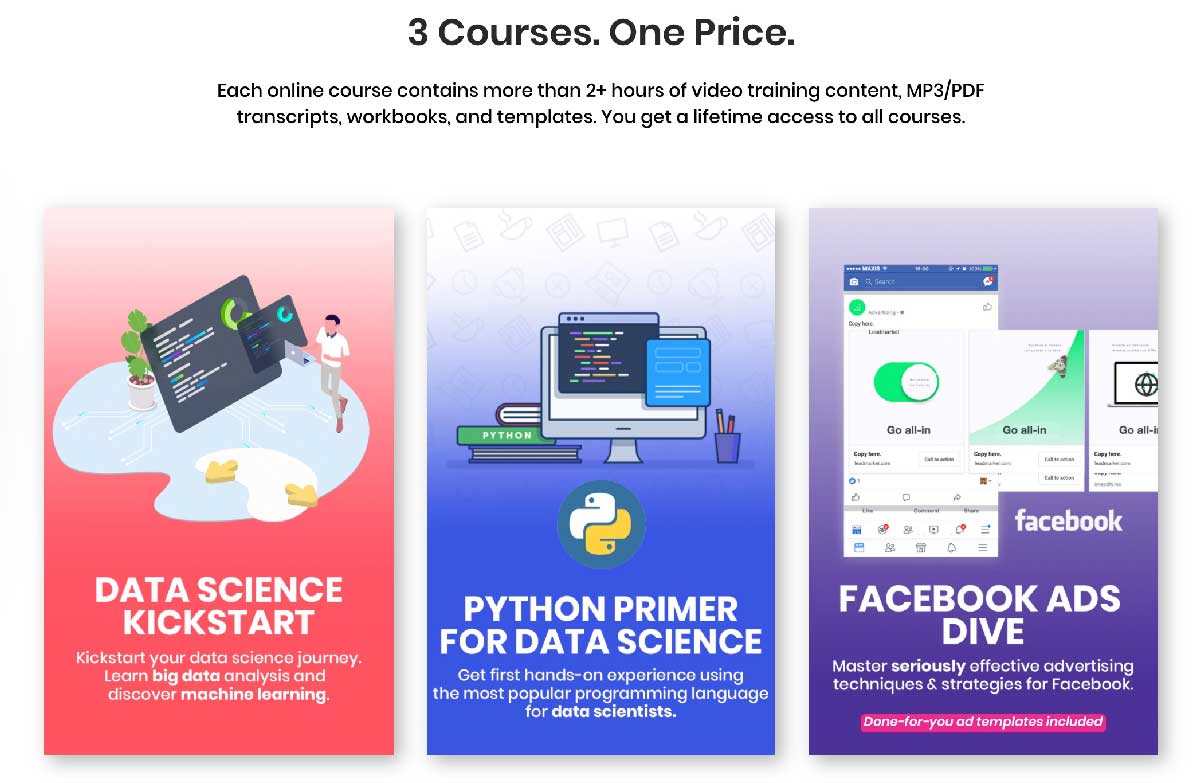
Get this. Of over 200 students who enrolled, only 15% completed the entire online course.
Why do people sign up for a course and then don’t complete them? Partially, we believe that certain people buy courses not for its content – but rather to feel good about making a good decision. “I bought a course, so I must be doing something great for myself. This feels good.”
What about the rest? As we studied and talked to our students, we discovered 3 main reasons why self-paced online courses have a low 5 – 15% completion rate.
1 – We lose motivation when things are too hard/easy.
Anything that’s worth learning is probably hard to learn.
Unfortunately, our brains are wired to choose the path of least resistance, so we have a tendency to give up when things become tougher. Ironically, when things are too easy, we also quickly lose motivation to keep doing them because they no longer excite us.
The key is to make something manageable difficult. This is also known as the Goldilocks Rule – we work at peak motivation when working on the edge of our current abilities. Not too easy, not too hard.
With self-paced courses, there is nobody around to guide and gauge the difficulty level for you. When things become too easy or hard, we start losing motivation. Before we know it, we’ve stopped going through an online course altogether.
2 – Passive learning = no learning.
We’ve been taught to learn passively since the start of primary school. In school, you sit quietly in a classroom while the teacher teaches. This was brought all the way to college and university! Sit quietly in the lecture hall, while the lecturer… speaks.
Unfortunately, most online courses adopt the same teaching style. Even if they don’t, the student expects to receive that sort of passive learning. Sit down and watch the videos on your computer.
Learning is not a spectator sport. In order to learn something, we need to be active in the way we learn.
If I wanted to learn to play tennis (which I did), I had to pick up the racquet and hit some balls. I’ll never be able to play tennis if all I did was listen to a lecture or watch a video – regardless of who teaches it.

3 – Lack of real-world applications.
Why do we always hear about people who dropped out midway through college to start something on their own instead?
It is probably because they are frustrated at not being able to apply what they were learning. Suddenly college seems like a waste of time. If I’m learning about building a business, shouldn’t I go and build an actual business?
Similarly, many online courses do not prompt students to work on real-world projects. Join a random online course on coding, and you’ll find yourself working on practice projects. Plus, many online courses are designed for commercial reasons, where course creators tend to fill their courses with fluff, in a bid to increase the watch hours.
You probably know someone who has finished a few online coding courses – and yet, has not built even one website!
Take a look at a recent inquiry we received:

How learning actually works.
So what can we do if self-paced courses and traditional style learning doesn’t work? How could we learn more effectively as an individual living in an ever-changing environment?
Let’s discuss 5 core principles of effective learning we discovered over the past 2 years, and share how we redefine our programs at LEAD to adopt these principles.
1 – Empty the cup.
Bruce Lee said: “Empty your cup so that it may be filled; become devoid to gain totality.”
The first step to learning is to forget what we know about a subject. If we approach a subject, thinking we already know it, we may not learn too effectively. Our minds works like a parachute. For it to work, it has to be open.
By approaching a subject like a beginner, we help ourselves focus from the beginning – thus increasing the absorption of knowledge and learning new information that we might have missed.
That is why we designed our programs at LEAD with lessons that starts with fundamentals, with an assumption that participants are beginners. This helps our students build fundamental knowledge before moving into more advanced lessons.

Even students with prior experience found that they discovered more when they approach a program with a beginner’s mindset.
2 – Engage in active learning.
Learning is not a spectator’s sport. When you learn anything new, always ask yourself: “What is the best way for me to learn actively?”
Gurus often advise writing down notes and even goals. Why? That’s because writing is a good way to engage active learning. Writing down our thoughts helps our brain clarify and store memory better.
Some ideas to engage active learning:
- Listening to a lecture? Write down notes, preferably hand-written.
- Learning to do sales? Do a role-play with your colleague.
- Learning to code? Work together in groups and discuss possible solutions.
- Learning to ride a bicycle? Push the bicycle around, even if you can’t cycle yet.
So how do we incorporate active learning into our programs?
We did this by launching a discussion board for our students. While every program at LEAD now has its own discussion board for students to post their work on, we initially ran a data science bootcamp in 2021 with this flow as a pilot. Students learn through daily videos and are tasked with daily assignments to work on at the end of each lesson.
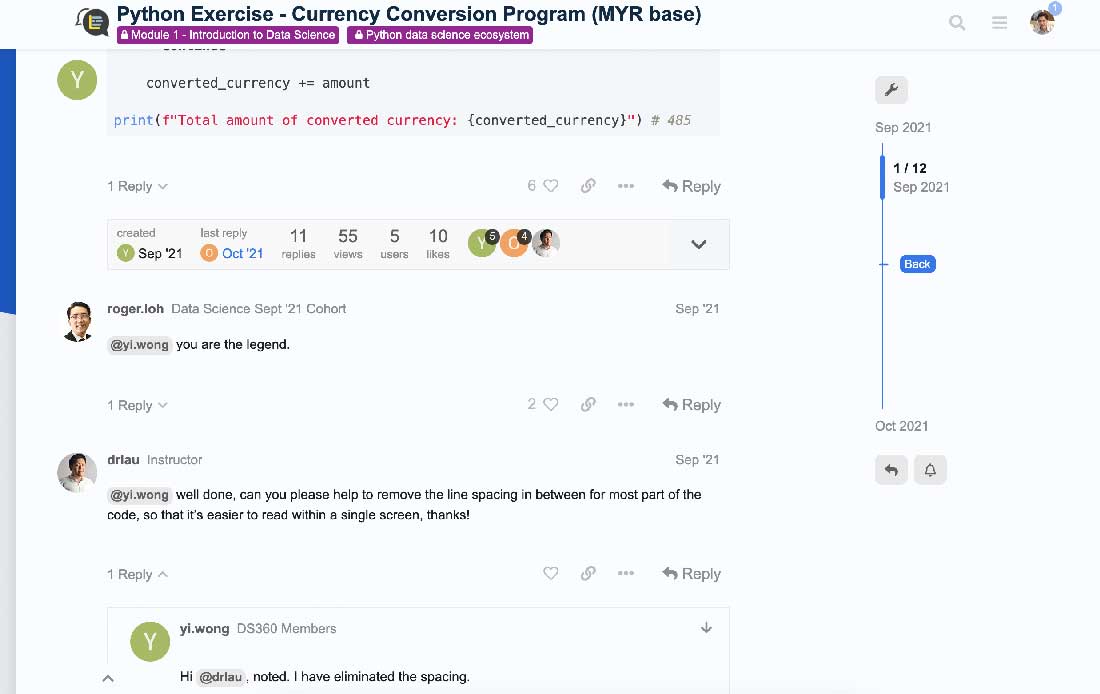
Because every student’s work will be publicly available for anyone in their cohort to see and engage on, this created a little tension. However, it was a good kind of tension, where students no longer only watch lessons passively, but have to work as well. And because it’s public, students became more inclined to do the work and post it up, after seeing their cohort mates posting their work as well.
At the core, students were practicing active learning. By doing so, they learnt faster and more effectively. As an example, by the end of the data science bootcamp, most of the participants were ready to work on commercial data science projects.
3 – Learning to teach.
Studies by National Training Laboratories show that the highest form of retention in learning comes when students learn through teaching others.
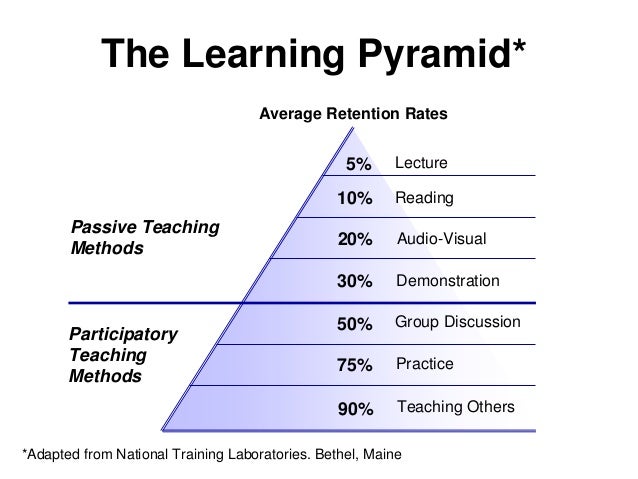
You get to learn twice when you teach others. First, when you learn it yourself, and second, when you teach it to someone. You learn from passing knowledge to them and discovering their thought process.
The courses at LEAD have evolved to encourage students to teach others. How so?
First, a student is required to post their work on a discussion board, shared by all the students in the cohort. Next, they are to randomly view posts posted by other students to leave a question, thought or correction.
This activity will feel weird in the beginning. Students not only do their own assignments, but had to look at other people’s assignments and comment as well.
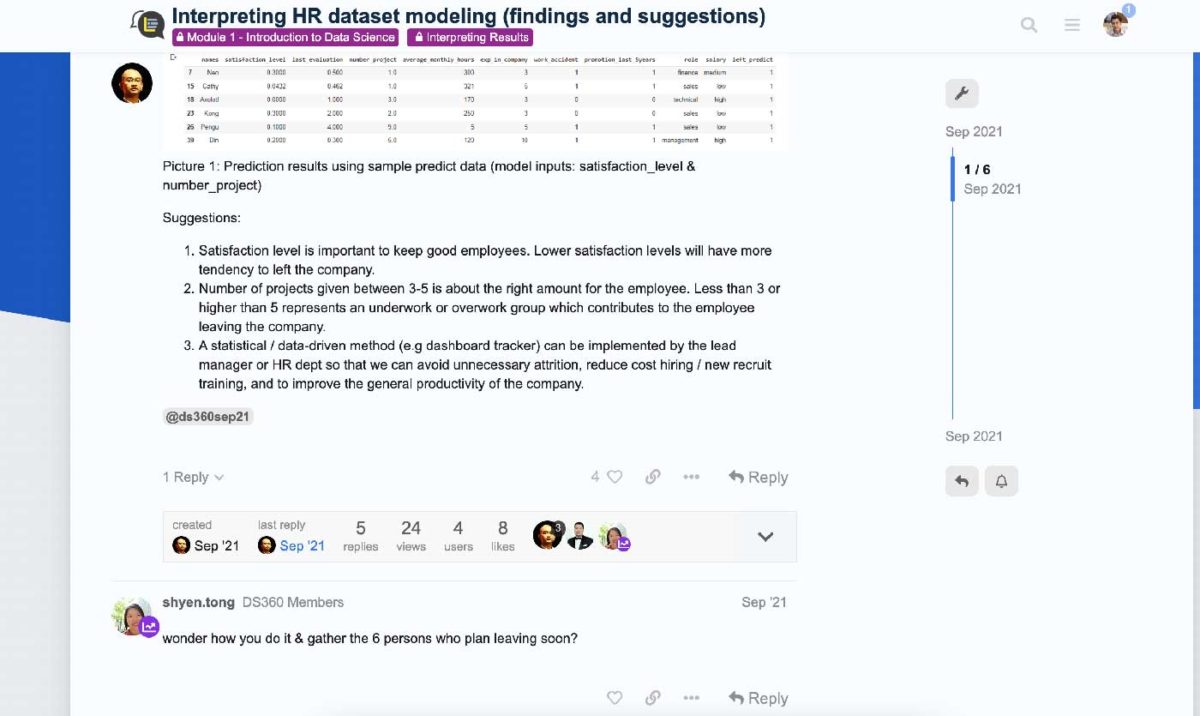
We built a system where students taught and helped each other. It enabled students to have a huge improvement in retaining what they have learnt – by teaching and contributing to the others.
4 – Set up a system.
If you want to lose weight, do you:
- Spend 4 hours straight on a Sunday, exercising at a gym non-stop.
- Schedule 1 hour each day to exercise.
Even if you’re not a fitness freak, you’ll know that the second method would be better.
Learning anything is the same.
Our brains learn better with spaced repetition. By coming back to learning, multiple times over a period of time, we give our brain enough time to absorb information and solidify it.
That is why we designed our workshops to provide a lesson and assignment every day. Students commit about 1 hour every day to work on the lessons, throughout a typical workshop. This act of showing up, and doing a little each day, build up their mental capacity, habit and more importantly aids them to learn more effectively.
5 – Review.
Have you finished a book before, only to remember a small bit of what you read? Maybe you’ve experienced this in high school when studying history.
Turns out, reviewing your work and lessons is as important as learning it the first time. Read a book three times, you’ll learn something new every time. Why?
Because when you read it the first time, your mind is of a beginner. But when you read it the second or third time, you are reading it with a grown mind.
Being able to look back at your past work, also helps you see how your thought process has grown. It’s the same feeling you get, when you look back at old photos you posted on Facebook. “Did I really look like that and talk like that? Wow, how much I’ve grown!”
Similarly, in our workshops, participants post all their work on the discussion board from day 1. When they reach the end of the workshop, they can easily review their past work and discover how much they’ve grown.
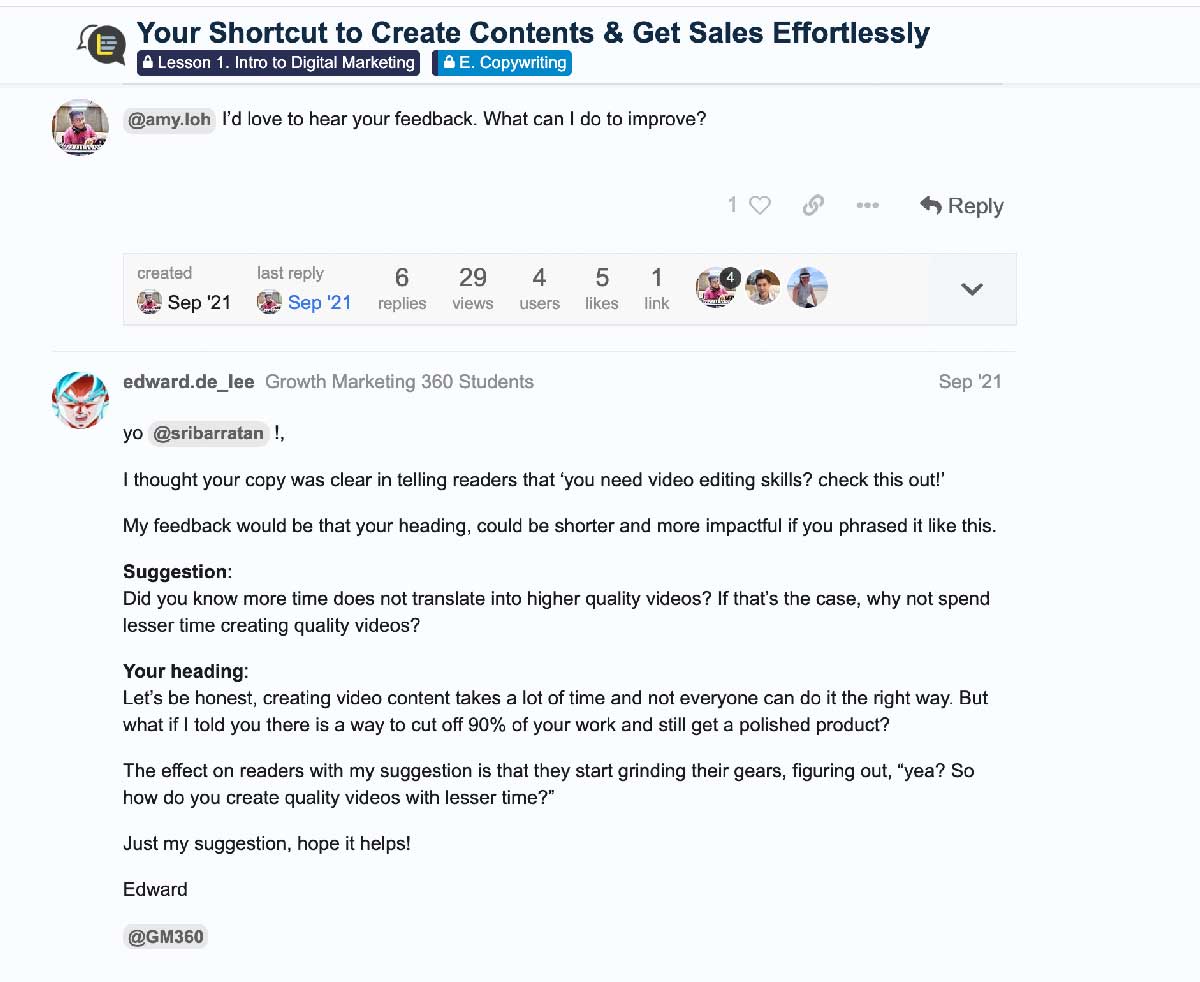
Reviewing your work not only helps you retain knowledge. Because you can visually see your growth, you also become more encouraged to continue improving yourself.
Conclusion
Learning is important, but it’s also important to learn how to learn. By studying and experimenting with methods for effective learning, we can help people learn faster and better.
After all, knowledge is a superpower. The more we know, the more value we can give others. And the more value we bring, the bigger the compensation we can ask for.
When was the last time you learned something new? Did you incorporate active learning and learning it with the intention to teach? Let me know below.
Check out Data Science Uncut Bootcamp, a 30 days data science bootcamp that follows the 5 learning principles explained in this post.

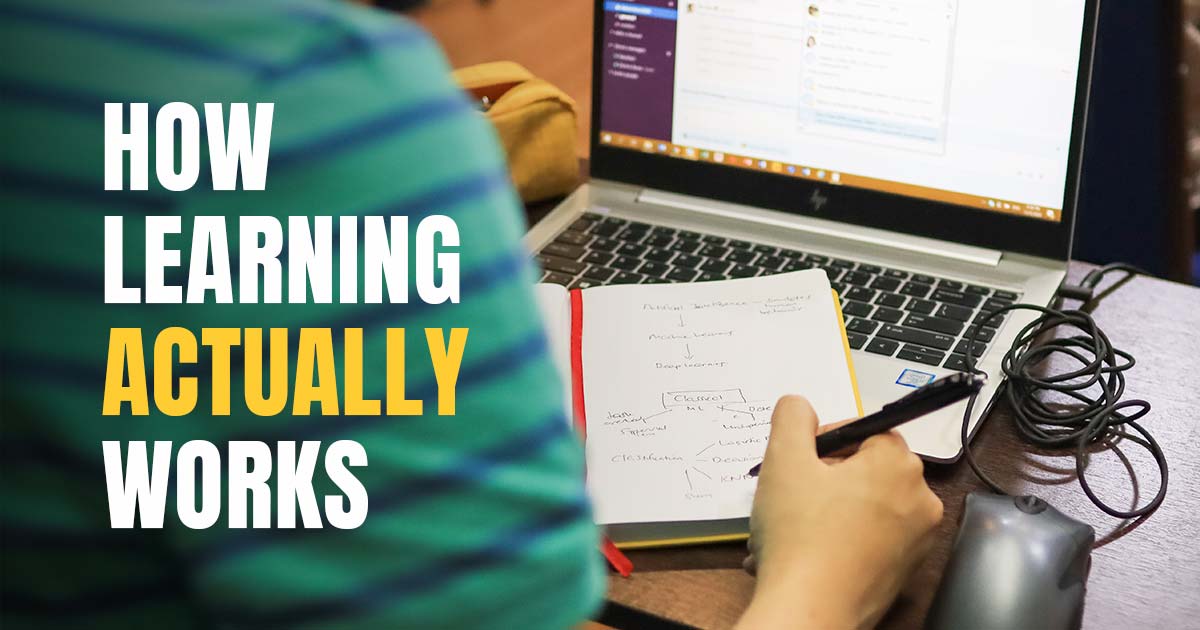
0 Comments